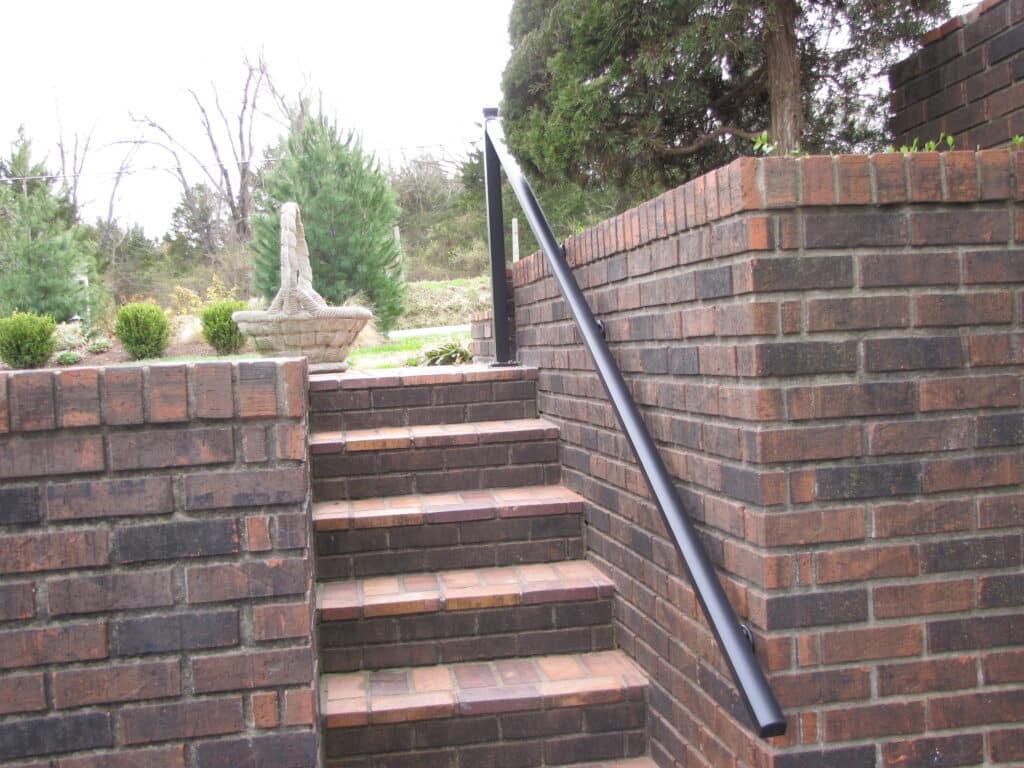AHD Blog
Which Side of a Stairway Should Have a Handrail?
If you’re remodeling your home or business, you probably already know the importance of a properly installed handrail. Handrails keep your building safe and accessible to all kinds of visitors. Beyond that, they’re required by residential and commercial business codes. And while handrail heights and lengths are fairly straightforward, other seemingly obvious factors can get a little confusing. For example, which side of a stairway should have a handrail? Scroll down to find out more about the regulations that determine stairway placement in homes and businesses.
Which Side of a Stairway Should Have a Handrail?
Stairway Handrail Requirements: IRC Standards
If you’re unsure about which side of a stairway should have a handrail, international building codes are the best place to start. First, let’s take a look at the International Residential Code for One-and Two-Family Dwellings (IRC) and the International Building Code (IBC). These two codes typically serve as the model for local codes; so, chances are that your local codes will mimic these guidelines. Here’s the tricky part: neither the IRC nor the IBC dictate which side of the stairway should have a handrail. They dictate just about everything else, from handrail height to continuity, but the codes leave it up to the builder to determine the best placement for a handrail. That means your local building authority is likely your best resource.
Stairway Handrail Requirements: ADA Standards
The Americans With Disabilities Act (ADA) dictates that handrails must be “securely anchored, have a smooth surface and [be] easy to grasp.” ADA standards also require that handrails be mounted between 34 and 38 inches high. Finally, ADA code dictates that “where required, handrails shall be provided on both sides of stairs and ramps.” So, where is that stipulation required? Like we mentioned above, the answer can likely be found with your local residential and commercial building authorities.
The Reality: It Depends!
As you might have gathered by now, handrail placement is largely up to your local building authorities. Standard building codes aren’t completely clear as to handrail placement. A few things to keep in mind: First, if you’re only installing one handrail, it needs to continuously run the entire length of the stairs. You might also consider that most of the population is right-handed, so making a right-sided handrail is often a smart choice. When in doubt, you can’t go wrong by installing a handrail on both sides of the stairway. This ensures that multiple people can go up and down the stairs without sacrificing support and peace of mind.
_____
So, which side of the stairway should have a handrail? The answer: It depends. When in doubt, make sure to check with your local building officials for requirements in your area. Remember that each state and county may amend the standard international building codes, so a call to your building authorities is always a good idea. And, if you’d like to make sure your stairway is as accessible as possible, you might consider installing a handrail on both sides of the stairs. This ensures a balanced look and maximum accessibility.
Now that you’ve explored the ins and outs of stairway handrail placement, are you looking for an expert who can walk you through purchasing and caring for a new aluminum railing? At Aluminum Handrail Direct, we are committed to providing high-quality aluminum handrails that are durable, maintenance free, affordable, and attractive. If you have questions about aluminum handrails or if you are searching for a handrail system that fits your needs, call us at 417-409-3179 or visit Aluminum Handrail Direct’s online store today. We offer handrails, wall mounts, mounting screws and anchors, touch-up spray paint, and much more. We look forward to hearing from you!


